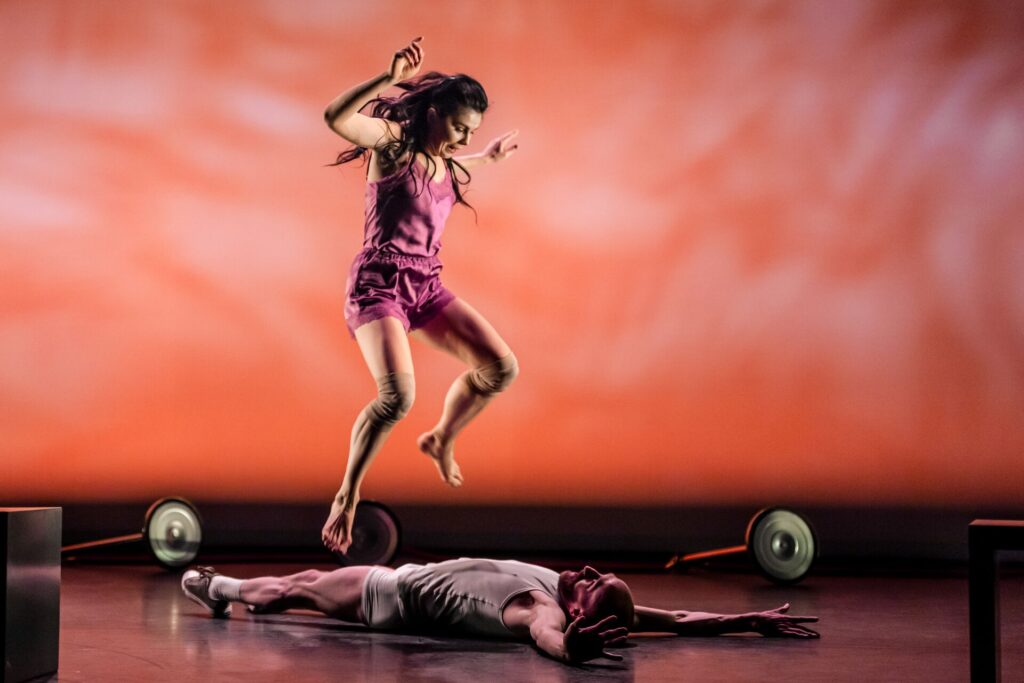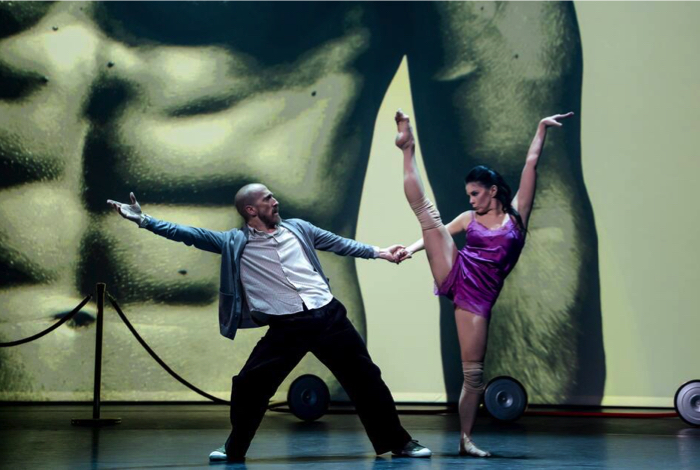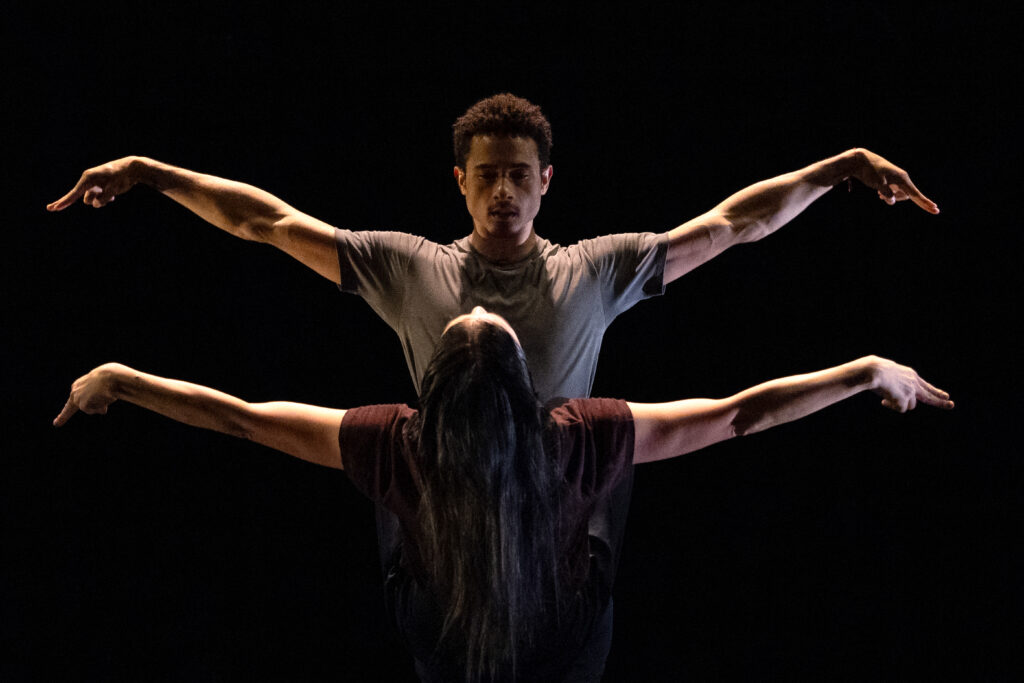Osipova/Linbury Review 4*

Russian ballet megastar Natalia Osipova pursues new and exciting avenues in her self-curated mixed bill at the Linbury
This article was first published on London Unattached
Best known pretty well the world over as an outstanding classical ballerina – a ballet superstar – over the past few years Natalia Osipova has embarked on self-curated projects that explore her talents beyond the confines of ballet. Her current show at the RBO second stage, entitled simply Osipova/Linbury, is yet another step in that direction.
Trained at the Bolshoi, Osipova first dazzled Western audiences with the power and reach of her jump, her superlative technique and, above all, the sheer vitality of her stage presence. She was soon dubbed “Force of Nature Natasha”. A member of The Royal Ballet since 2013, she has made her mark in all the key roles of the classical repertoire; for me, her Giselle of Act II, an almost feral, no longer human spirit, yet still capable of very human forgiveness, is the ultimate, unsurpassable reading of the role.
The current Osipova, though, is intent on pursuing fresh avenues. She finds less known short works she thinks suit her; as well, she commissions new works tailor-made for her, and choreographers such as Arthur Pita, Didi Weldman and now the Norwegian dance maker Jo Strømgren, are only too happy to oblige.

Jo Strømgren’s The Exhibition
Strømgren’s The Exhibition, a quirky piece of dance theatre, premiered at the first Osipova/Linbury show earlier this year and returns now as the closing piece in the current show.
We knew Osipova could dance, of course; also, that she could act. But could she speak, too? Well, emphatically yes. The Exhibition is set in a gallery where two strangers come to view the artworks. Osipova is an elegant urbanite, in her flowing burgundy trousers with matching high-heeled shoes and a pleated caramel coloured overcoat (she will later strip down to her equally stylish undies); Christopher Akrill, a versatile dance actor and a regular of the Mark Bruce Company, is a scruffy art lover, with his red woollen beret and scuffed plimsols. Spoiler alert: his undies are definitely not so stylish…
It soon turns out they don’t speak each other’s language – she babbles away in Russian, he in English; she is all cheeky provocation that causes panicked resistance in him.
Osipova is mesmerising, her speech fluent and clear, her body language giving meaning to the words, even for those of us who don’t understand Russian. Her comedic talents come to the fore, and Akrill provides an excellent foil to her zany advances. I found myself happily chuckling as it went on.

Primarily a spoken piece, The Exhibition regularly breaks into spells of movement which illustrate the narrative, as it lightly suggests themes of connection beyond the limits of language.
The programme opens with a reworked piece by Alexei Ratmanski, Middle Duet II.

Alexei Ratmanski’s Middle Duet II
Premiered at the Mariinsky Theatre in 1998, the piece entered the repertoire of New York City Ballet in 2006 and is now presented at the Linbury with a new, specially commissioned score by Philip Feeney.
Osipova is partnered by Patricio Revé, an excellent Cuban dancer, who is now a principal with Queensland Ballet – I’m really looking forward to seeing him as Albrecht to Osipova’s Giselle on the RBO main stage come March.
A man and a woman dance a tense duet under the watchful eye of a Black Angel and a White Angel.
Their movement is continuous yet spiky. A kind of angsty energy runs through it. The language is classical, yet imbued with very contemporary accents. Are they enacting a forbidden love affair? Or just the progression of lives together? They collapse on the floor, and the angels make their move, the White Angel prevailing. As they are raised, a young couple (Royal Ballet artists Katie Robertson and Blake Smith) take their place.
It’s a beautiful, truly engaging piece made compelling by Osipova and Revé’s dancing.
Akram Khan’s Mud of Sorrow
Akram Khan’s Mud of Sorrow is another good example of an existing piece which Osipova felt would suit her.

It’s based on a work choreographed by Akram Khan for another great ballerina, Sylvie Guillem. Osipova first danced it with Khan himself in 2021. Here she is partnered by Patricio Revé. Set to a mournful Corsican folk song and darkly lit by Chris Wilkinson, this pas de deux appears to be a meeting between a man and his memories of a loved one. He lifts her from the ground, and she clings to him, legs wrapped around his waist. It’s a short, yet emotionally powerful work.
Ashton’s Five Brahms Waltzes in the Manner of Isadora Duncan
A film of Ashton’s Five Brahms Waltzes in the Manner of Isadora Duncan offers Osipova a welcome break from live performance.
Isadora Duncan was an American dancer who, by breaking free of the strictures of codified dance and ballet, pioneered modern dance. She danced barefoot in costumes inspired by Greek tunics; Ashton saw a performance in 1921 and was dazzled.
Five Brahms Waltzes harnesses Isadora Duncan’s free style, and its flowing, ecstatic movement suits Osipova. The film, conceived and directed by Grigory Dobrygin, seeks to enhance the emotional and aesthetic aspect of the piece without intruding, and it succeeds.
In short, Osipova/Linbury is an enjoyable programme, more satisfying than some of Osipova’s previous self-curated efforts. It illustrates yet another facet of her considerable talents.
© Teresa Guerreiro
(Banner Image: Natalia Osipova and Patricio Revé in Mud of Sorrow © RBO 2025 Photo: Andrej Uspenski)
Osipova/Linbury is at the RBO Linbury Theatre 10 to 15 November 2025
